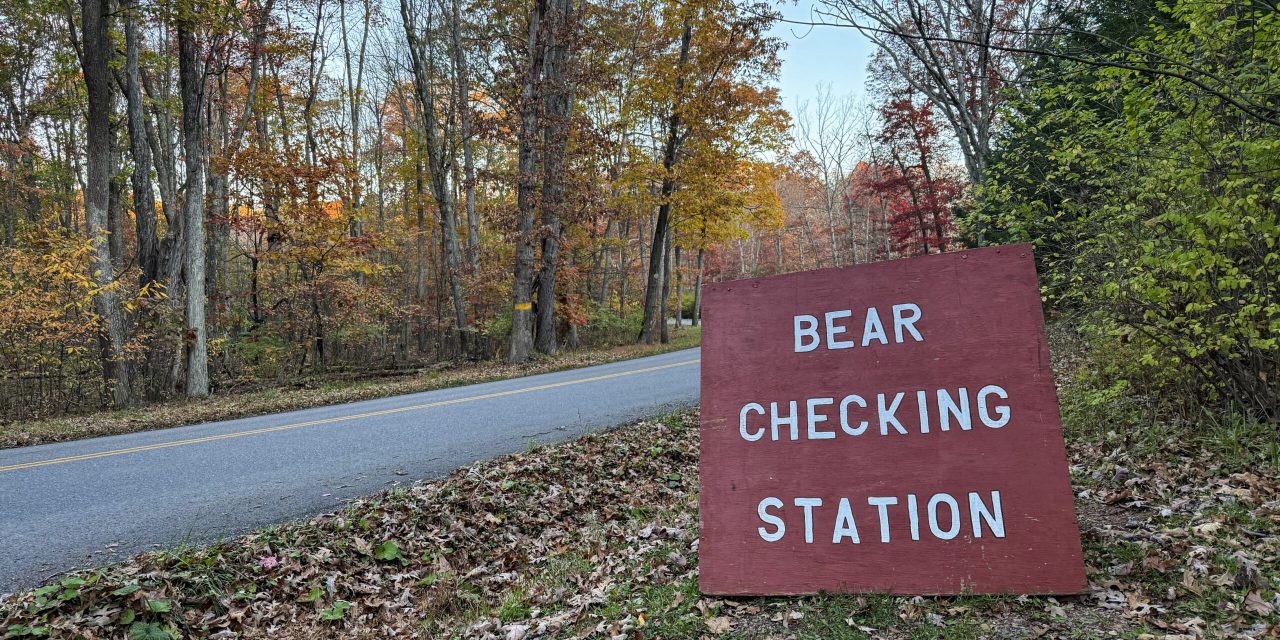By ROBERT STEWART
OAKLAND, Md.--Bear hunting season is underway in Maryland’s westernmost counties this week, with almost a thousand hunters licensed to participate in six days of what the state refers to as its “bear population management program.”
But as the bear population rises and animals wander toward more populated areas, hunting as a means of population control remains controversial.
“As you can imagine, the black bear hunt is a hot topic at times,” said Jonathan Trudeau, the game mammal section leader of the wildlife and heritage service of Maryland’s Department of Natural Resources.
“We’re getting reports of bears on a fairly regular basis in Montgomery County, Howard County, Carroll, and even Baltimore (counties) at this point,” he said.
The hunting range — which opened for bear hunters on Monday — is limited to the counties of Garrett, Allegany, Washington, and Frederick, around the mountains of western Maryland where the black bear is more abundant.
For hunters, bear season is a rare opportunity to protect humans from wild animals. Over 4,500 hunters had hoped to win an opportunity to hunt one single bear during this year’s bear season, but only 950 were selected. They’re supposed to follow strict regulations that prohibit baiting and limit the use of dogs and certain firearms.
For Maryland conservationists, the six-day hunting season means revenue for bear population research and management. The hunt, managed by DNR, is one part of the state’s multi-pronged effort to understand and manage Maryland’s growing black bear population.
But animal rights groups say lethal means are not the best way of managing the growing bear population.
“The Humane Society of the United States opposes all forms of trophy hunting,” said Jennifer Bevan-Dangel, state director of the HSUS in Maryland, “and that certainly includes black bear hunting and the hunt here in Maryland.”
Bevan-Dangel believes there are other ways to deal with the bears. Black bears do not pose any immediate threat to humans, but they are wild animals. According to the DNR’s site, there have been only two reported bear attacks in Maryland, and residents can help to avoid conflicts with bears by learning how not to attract them.
“You can’t hunt your way out of conflict, especially with this species,” she said. “We’re neither convinced that this level of lethal population management is necessary or that it’s effective.”
Bevan-Dangel said humans could live side-by-side more harmoniously with the American black bear by following a few simple guidelines, like avoiding encounters and trying not to lure the animals. They can do this by cleaning grills, bringing bird feeders inside, and securing trash cans, she said, because the smell of tasty treats is often what brings bears around.
“Even if one bear is hunted and removed,” she said, “another bear is certainly going to come along.”
There was a time when managing the bear population meant banning hunting, not permitting it.
In the 1950s, the bears were nearly extinct in Maryland, according to the DNR’s website. So in 1953, state lawmakers banned bear hunting. The ban, coupled with improvements to bear habitat, led to a rebound in the population.
In 2003, when a black bear task force voted to reinstate bear hunting, the population was estimated to be between 266 and 437 animals in Maryland. The bears were mainly concentrated in what the DNR calls the “occupied bear range” in the state’s westernmost counties.
Now, 20 years later, Maryland’s black bear population has grown and spread.
Trudeau said the DNR estimates roughly 2,000 bears are in the state, and there are indications the population is healthy and increasing. The agency monitors bear populations by visiting dens, counting reproduction rates, tracking complaints of run-ins with bears and using “scent sites.” That method involves hanging sardine cans in particular sites and monitoring bear visits.
“It’s not a trophy hunt by any stretch of the imagination,” said Trudeau, contradicting the HSUS’ categorization of bear hunting in Maryland. “It’s an extremely, extremely restricted hunt and they only have six days to harvest a bear.”
The restrictions include a one-bear limit per hunter, and limitations on the use of hounds, bait, and electronic “calls” – devices used to lure bears. The DNR also mandates that every bear hunted be brought into one of the bear hunt checking stations. There, biologists collect biological data on the bears and hunters identify the site of the kill.
The checking stations help Maryland scientists better understand bears, model the population, and predict how various management actions – like hunting – can impact bear populations in the future, said Trudeau.
“When that bear comes into this check station, it provides us as the biologist with a unique opportunity to collect a wide variety of data,” said Trudeau.
“Our goal is to essentially slow the eastward expansion of the population,” he said, “and have a stable, a very healthy black bear population.”




Recent Comments